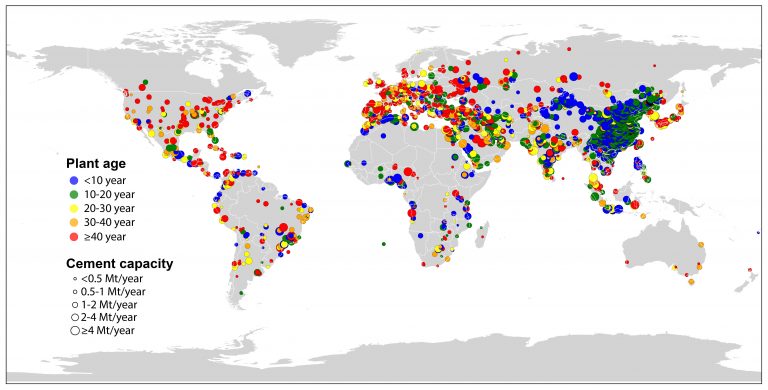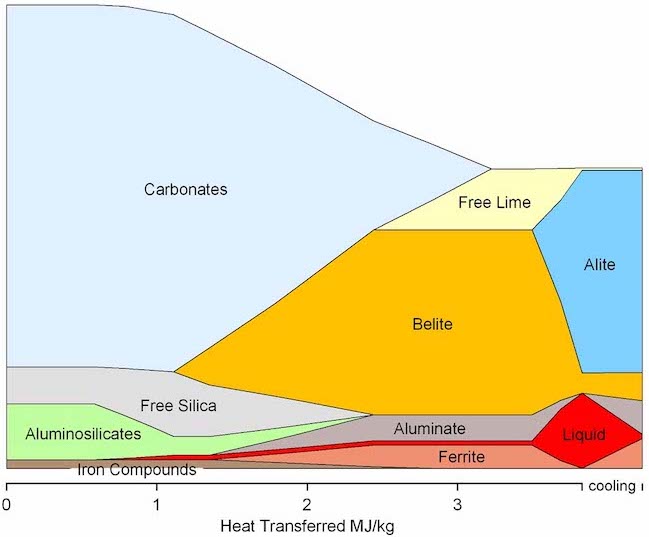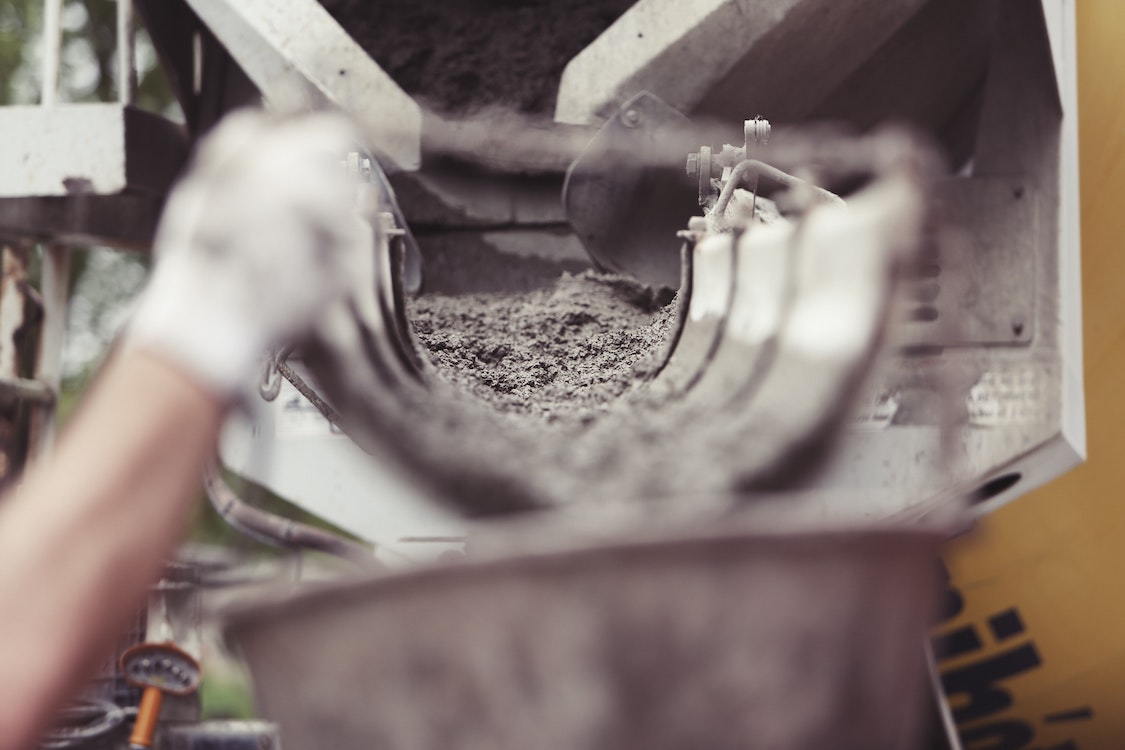
What is the first thing that comes to your mind when you hear the word cement? Depending on your interests, there are several options. It could be the Burj Khalifa in Dubai, the Bang Na expressway in Thailand, or any of the architectural marvels that are made of the stuff (well, technically concrete, but we will get there). What probably didn’t come up in your top 10 was cement’s environmental impact.
Two months ago, I was in exactly the same position. But then I started a new job as Engineering Manager of the Machine Learning team at Carbon Re (Re – rhymes with bee). Having spent my career in sustainability and renewable energy, on the surface, this might seem like a left-field turn. However, that is absolutely not the case. I’d like to share with you why that is and some of the things I learned in my first two months in the cement industry.
1. Cement is everywhere
Cement is the main ingredient in concrete, along with sand, water and gravel. Mixed together with different ratios and add-ins depending on the strength and properties required, this is the material that our modern world is literally built on. Concrete is the second most used material in the world, after water, and we will only need more of it in the future. But beyond that, what shocked me is how ubiquitous cement is within so many building materials. Plasterboard and grouting, two materials I am intimately familiar with to fix my many DIY mishaps, are also cement-based, as are many more specialised building materials. Cement is one of the most important things in your life that you never think about.
2. How to maximise impact
All the necessary cement comes from just over 3000 plants worldwide. Given how much is needed and how common the raw materials are and how much easier it is to make than to ship it in from far away, cement plants exist in most countries worldwide. However, those 3000 plants account for 8% of total global GHG emissions every year. 8%. 3000 plants. That is more than deforestation, aviation and shipping combined. Add in glass, steel, and other ‘hard to decarbonise’, and that number jumps to between 15 – 20%. Carbon Re was founded to be a company that has a real and significant impact on global emissions. We tackle this specific problem because, as far as maximising our impact for each action and each customer, there is no better problem in the world to solve.
More than that, however, this is a problem we can start to fix now. Due to the radiative forcing impact, reducing 1 tonne of CO2 today is more impactful than reducing several tonnes in 15 years. Often, in the world of sustainability, we talk about models for the future and new technologies coming online in 2040. While every avenue to decarbonisation is important, reducing emissions right now is the biggest impact any of us can have on the planet.

Map of global cement infrastructure in 2019 (GCED)
3. Small percentages add up to real emissions reductions very quickly.
Due to the huge costs of these plants, many have been in service for a while and are far from optimised in terms of fuel efficiency and processes. If I were describing it in a pub to a friend a cement plant is effectively a massive, rotating oven that heats rocks up to 1500 degrees Celsius, turning them into smaller rocks in the process. This requires a huge amount of fossil fuels, as well as increasingly alternative fuels, and balancing many different control variables. This is often done by manual control, or through optimiser systems that can’t react to the changing conditions in a plant quickly, which is where Carbon Re comes in.
We apply machine learning to the huge amount of data produced in a plant every second to run the plant more efficiently. This means we can decrease the amount of fossil fuels burnt and increase the amount of alternative fuel used whilst keeping the quality of the end product the same. Due to the scale of the plants, small percentages in fuel efficiency improvements can add up to millions of dollars saved for the plant and thousands of tonnes of CO2 saved for the environment. To take a recent example, last month one of our customer plants reduced their CO2 emissions by 120 tonnes of CO2. That is equivalent to replacing more than 60 petrol cars with electric vehicles over an entire year.
Seeing that impact makes me more excited for work on a Monday morning than is generally considered sane.
4. Every plant is different, every plant is good.
Building and deploying these machine learning models across many plants is an interesting challenge, as we must balance repeatability with specificity each time. At first, this really shocked me, as my expectation was that with similar chemistry comes a similar process. But quickly, getting my head back into chemical engineering mode, I realised that this was quite a naive assumption. Whilst the constituent building blocks of a plant remain the same, many crucial differences affect how we can deploy our products.
Does the plant have one pre-heater string or multiple? Does it have a pre-calciner?
Does the plant have a bypass with tertiary air into the pre-calciner?
What method does the plant use for its quality control measurements?
What type of gas analyser does the plant use, and where are they placed?
How does the plant store, process and stream their data?
Ultimately we are trying to model real, unique physical systems. This means the data that we use has to be applied correctly for that plant and that process. This is an exciting challenge in two directions as we both find ways to build the most accurate models for each customer and work out what we can apply to general models that we can build up for the whole industry.
5. Chemistry is fundamental
For every disgruntled kid who’s ever asked, “But Teacher, when will I actually ever use this in real life?” The answer could be “Yes, at Carbon Re”. My background is in chemistry and chemical engineering, and I love that I get to spend my day building ML models of physical processes and thinking about phase diagrams, steady state reactions and combustion.
The science of the cement process appears quite simple, mainly covering the calcination of calcium carbonate. However, this reaction happens in multiple stages, including a complex set of sintering and solid state solution reactions. If you’re an inorganic chemist like me, that is like being told Billy Joel and Elton John are playing a Maddison Square Garden duet show specifically for you. (Admittedly, you also have to be a big Billy Joel and Elton John fan for that to resonate). But it’s really cool.
Calcination: CaCO3 –> CaO + CO2
We also spend a lot of time thinking about complete and incomplete combustion. Another process that, on the surface, is simple chemistry. Again though, this reaction combined with real streamed gas analyser data, process control variables and fuel variations leads to a complex problem where small differences can lead to huge deviations in outcome. These are the sorts of challenges we look at every day, and understanding the physics and chemistry at work in these plants is fundamental to being able to model them effectively.
Combustion: CH4 + 2O2 –> CO2 + 2H2O + Energy
Incomplete Combutstion: CH4 + 3/2O2 –> CO + 2H2O + Less Energy


Left image: Variations in phases during the formation of Ordinary Portland Cement clinker (the main ingredient in cement). Right image: Understanding peak combustion efficiency.
6. Room for more
Despite being at the start of our journey, we are already seeing the impact that many companies take lifetimes to achieve. If that interests you, and you are intrigued by the things I’ve learnt in my two months here, I suggest you check out these other blogs written by members of the Machine Learning Team, like Theo’s on clinker chemistry or Jess’s on combustion efficiency.
If that gets you even more excited, how about joining us? We are hiring in both the Machine Learning and Engineering teams, looking for driven people who want to make an impact. We’d love to hear from you.


